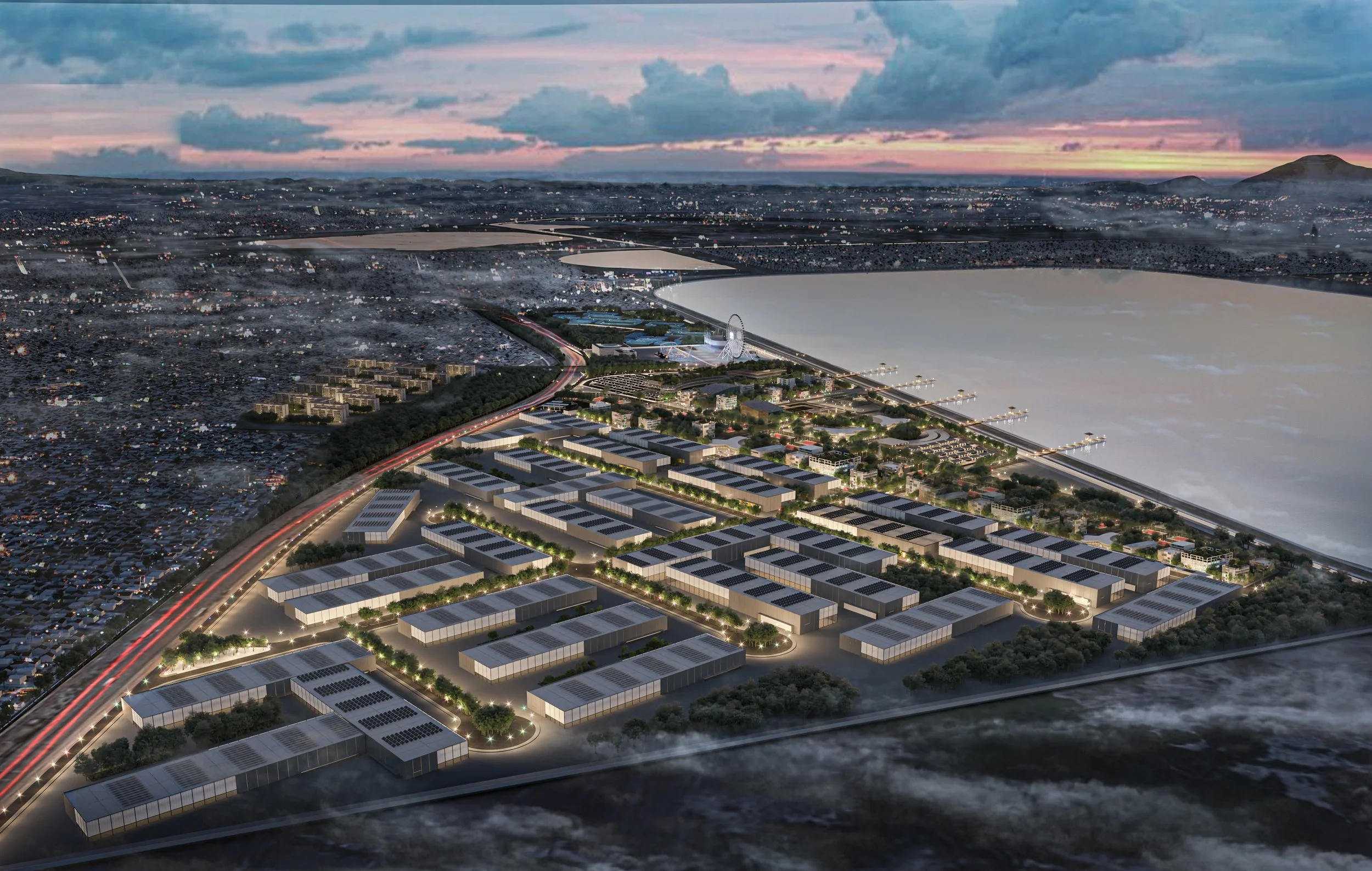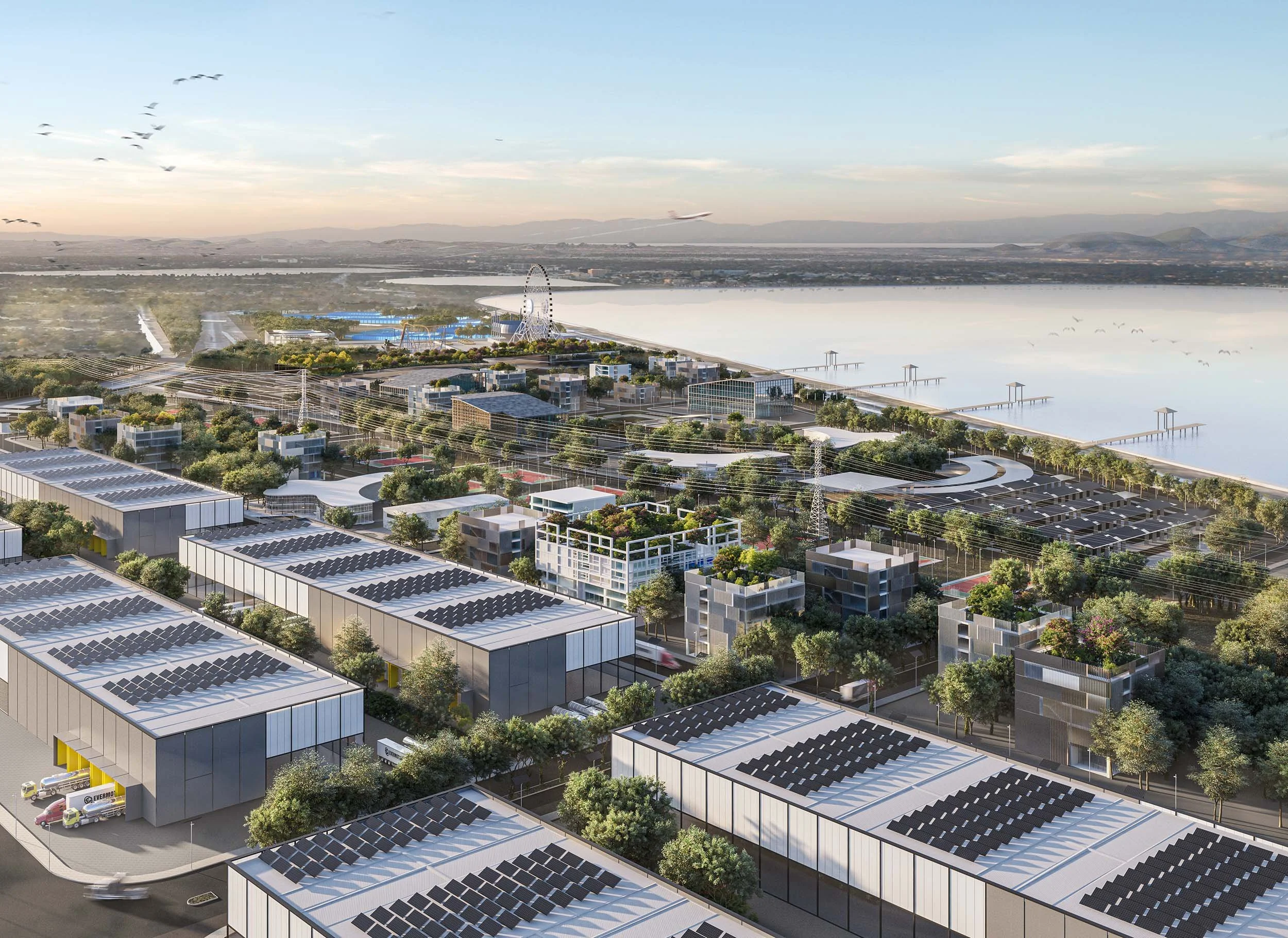CERAO
Project Status: In process
Area: 150 ha
Location: State of Mexico
Design: MCxA

Context
The Intelligent City of the East represents a new development and economic growth zone located in the Municipality of Chimalhuacán within the State of Mexico, positioning itself as a strategic node within the broader Metropolitan Area of the Valley of Mexico. Chimalhuacán has historically been characterized by informal urban development, economic challenges, and limited access to formal employment opportunities, making this planned intervention significant for regional economic transformation and urban upgrading. The project encompasses 150 hectares, a scale sufficient to create a comprehensive mixed-use district rather than a single-purpose development, enabling the integration of industrial, commercial, civic, and public space functions within a unified master plan.
The development's structure combines an industrial park with an urban center offering services, shops, and regional facilities, all surrounded by public spaces and supported by fully planned infrastructure systems. This programmatic integration distinguishes the project from conventional industrial zones that isolate employment from urban amenities, instead creating a complete urban district where workers can access services, dining, retail, and public spaces without leaving the development. A Regional Transportation Center ensures connectivity with the rest of the Metropolitan Area, facilitating residents' access to workplaces and connecting the employment opportunities created within the development to the broader regional labor market. The presence of the State of Mexico's police academy addresses security concerns that often hinder investment in peripheral developments, providing visible institutional presence that ensures the safety of workers and visitors.



Design Principles
The organizational concept positions the development as a catalyst for economic development, creating employment opportunities and services that benefit Chimalhuacán's population while establishing a technological development center serving the entire Valley of Mexico. This dual-scale ambition acknowledges that successful economic zones must serve both immediate communities and regional markets, generating local employment while attracting businesses and talent from across the metropolitan area. The integration of industrial and urban functions reflects contemporary understanding that knowledge economy workers and advanced manufacturing operations benefit from urban amenities and mixed-use environments rather than isolated industrial estates.
The comprehensive infrastructure planning ensures that growth occurs in coordinated fashion with supporting systems for transportation, utilities, communications, and public services in place from inception rather than added reactively as development proceeds. Public spaces surrounding the industrial and commercial zones create environmental amenity, recreational opportunities, and social gathering areas that enhance quality of life for workers and residents while providing ecological benefits including stormwater management and urban cooling. The Regional Transportation Center functions as both practical infrastructure enabling efficient commuting and symbolic gateway establishing the development's regional significance and connectivity. Together, these elements create an integrated urban district that demonstrates how peripheral areas within mega-metropolitan regions can evolve from informal settlements into planned, economically productive urban centers that raise living standards while contributing to regional economic competitiveness.
